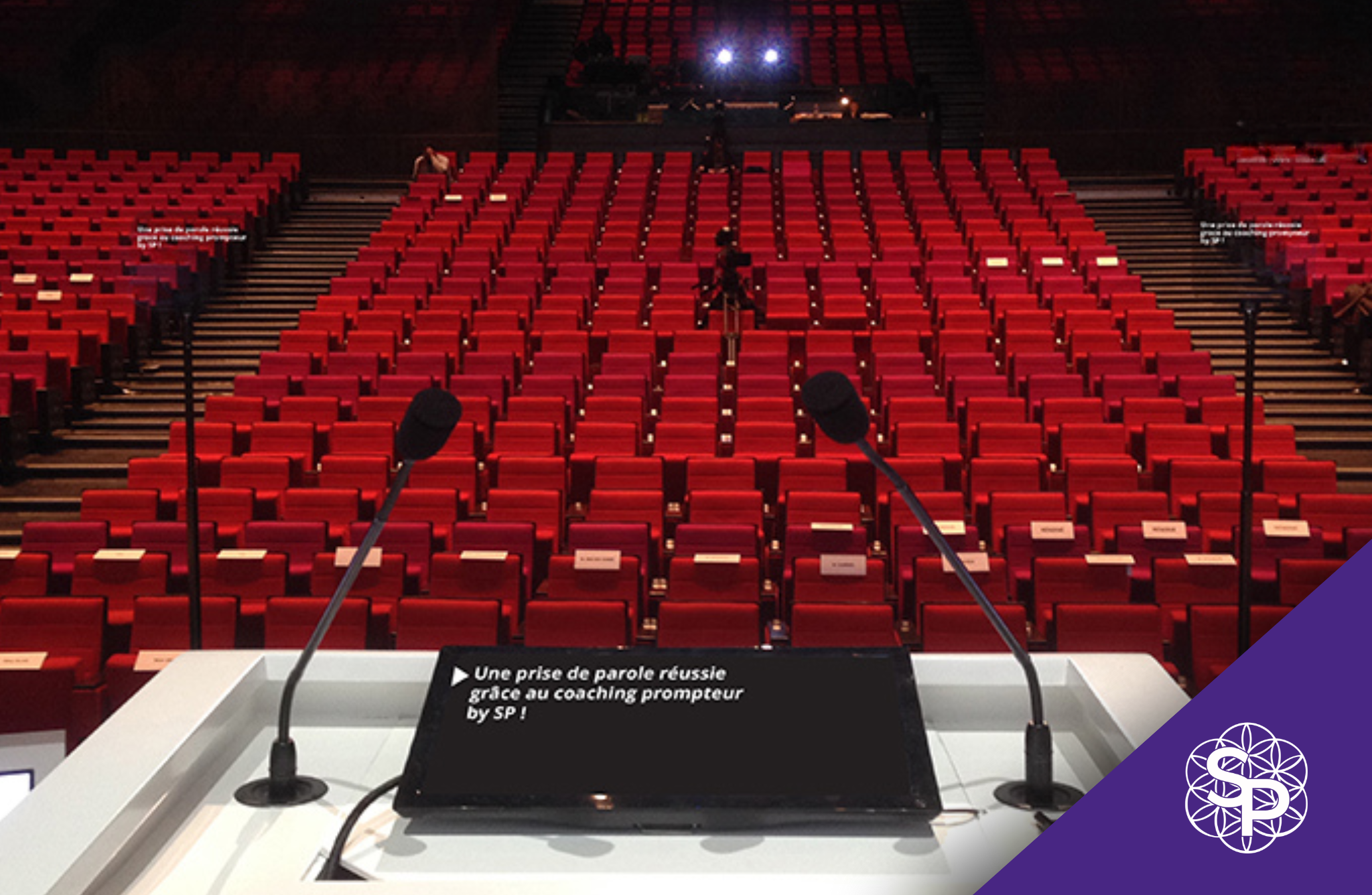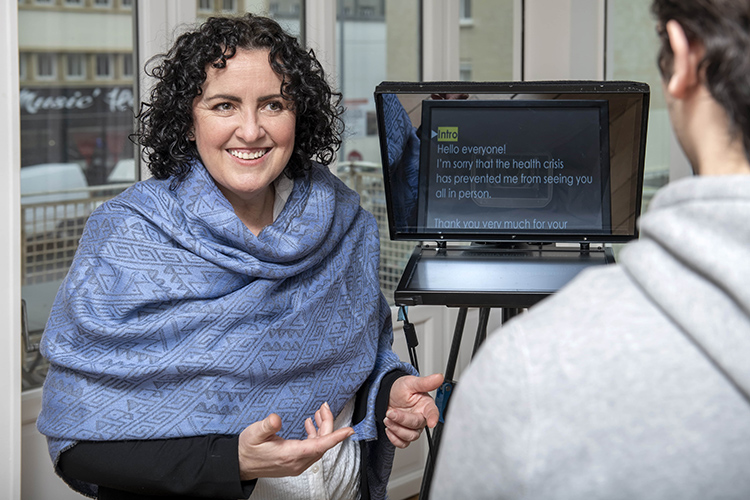Mastering the art of a teleprompter may not always be such an easy task

The first time you try it, many are surprised! You might think that all that is needed is to read a text mirrored on a glass pane and Bob’s your uncle, you know exactly like those TV presenters you see so comfortablely reading away; it seems like child’s play, right?
Think again! So as to get the ample flow of text to read, adopt a correct rhythm, take breaths, while not forgetting to take a pause here and there, not to mention to know how to emphasize the important points thanks to your intonation, well, you get it, this is not necessarily everyone’s cup of tea!
So: what are the subtleties? Why is it so important to have a teleprompter coach to guide the speaker?
Here is our round-up of our subtleties and other important points to take into account when using teleprompter technology. Your clients will be able to get the best from its use and who knows they may just well nail all their future speeches 😊

1. Getting to grips with the script on the prompter: first attempts
After the “pens” (or the speaker himself!) have spent days, weeks, or even months writing a text, the big day has arrived.
It’s THE day of the event!
The venue is ideal, the technical teams are all set up and ready, everything is working properly, in short: the conditions are just right for a successful event.
On our side, the teleprompter operator is in place, making sure s/he has a view on the teleprompter and the speaker, the texts are entered in teleprompter software and the layout of the text is done before the speaker arrives. Formatting text is a time-consuming step, but such a vital one as it will greatly help the skill of his performance.
Once in place, the first step is to introduce the teleprompter device to the speaker so that he can get to know it. Depending on the teleprompter chosen (camera, plasma, conference speaker, etc.) the text display will not be the same. The speaker must first of all get familiar with his “secret ally”, then he will be able to give his first remarks on the spot to make the necessary adjustments according to his preferences, but also to immerse himself in the situation and make his mark in the defined space.
2. Rehearsing
So the text size, font and layout must all be approved by the speaker to ensure comfortable reading. This avoids straining of the eyes and wincing while reading. Once these initial details have been given the green light, it’s time for the rehearsals!
This is a very important moment for the teleprompter operator, but also for the speaker, it is here that the human connection is established… the start of a dual partnership.
As it happens a client regularly asks us the following question: “Is the teleprompter automatic?” It’s no wonder though as many video shootings are carried out with automatic prompter applications that do not place a big emphasis on comfortable reading and synchronized playback with the speaker’s voice. This can result in an unpleasant teleprompter experience for the speaker.
So our role is also to reassure the speaker, to show him that the speed of the scrolled text adapts to the rhythm of his speech and this thanks to the operator’s manual scrolling. Yes you got it, it is indeed a real person who manages the speed of the moving text in line with the rate of his speech speed.
The moment has then come to repeat a few lines (or the entire text, depending on preference) of the long-awaited speech to highlight our words and demonstrate that the teleprompter can only help them to sublimate and bring another dimension to his speech.
These rehearsals are a crucial step in any event; allowing the speaker to get his bearings, especially when it comes to using the teleprompter.
3. Getting tips from a teleprompter coach
Our experience with 300 events per year has shown that there is a common thread in all these speeches: the speaker and the prompter must be in harmony. It is the speaker’s personality that will define the effectiveness of the interpretation of his speech.
All speakers are different and each has their own way of doing things, but we are here to ensure that the message will be delivered with the impact it deserves.
Here are some tips to ensure that effectiveness!

- Start with Breathing
This notion is essential in any speech, or in the writing up of any speech. Breathing is a key element when speaking and plays an important role in the interpretation of the text, not only for the speaker, but also for the audience.
It will allow for better elocution, the audience will have time to integrate the information, and the speaker will be able to deliver the important moments of his speech to give it more impact.

- Then, take your eyes off the teleprompter
When using a speaker teleprompter or a stage teleprompter in particular, we help the speaker to maintain eye contact with his audience through several techniques. A very important one is the layout with a style specific to Solutions Prompteur. Thanks to the operator’s know-how, the interpretation of the text is adapted visually to facilitate a more natural outcome.
Once the breathing is mastered, the text is well incorporated and reading becomes easier, it is advised that the speaker lifts his vision away from the teleprompter from time to time. The objective is to keep eye contact with the audience, not to let it seem that the speech is being meticulously read, but on the contrary, that the speaker masters it without support. This is something you can achieve when you start to gain confidence in yourself and in your speech.
This is why it is so important to have a dedicated teleprompter coach who can accompany you, so that you can have a greater impact and keep the audience’s attention!

- Finally, being natural is key!
Not only for the speaker, but also for the audience. Those listening to the message expect something lively, authentic and personal. We are in an era of truth, so naturalness has an important place in any speech!
This last point adds to and completes the others.
During a speech, an audience appreciates simplicity and proximity. To allow for this, in addition to the previous points, we advise the speaker to “play with the text”. Improvisation, humor (depending on the context), looking up from the text, adding unexpected phrases, etc. These additions will help achieve the desired goal: to sound natural.
If your clients take these aspects into account, they will most probably get the missing dimension to a perfect speech, which mixes a natural tone, accommodates stats and wins hearts and minds of the audience!
Be sure to check out our page dedicated to speaker coaching to learn more about how we accompany our clients….


